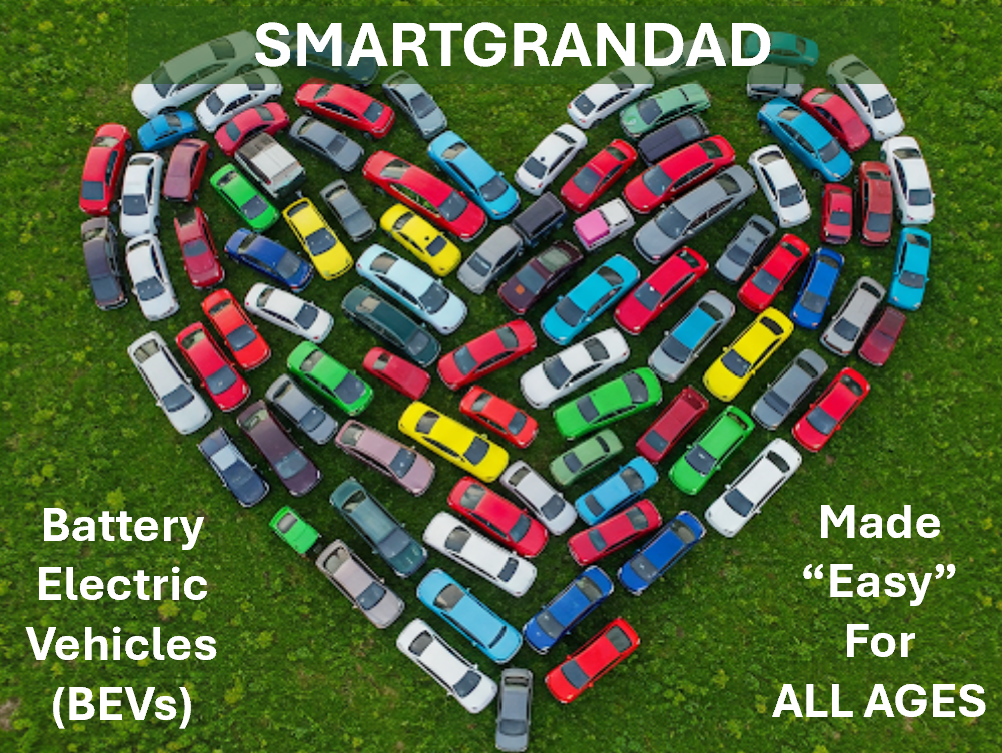POSTS > Opinions & Guides
EASY BEV” GUIDE 2: Choosing The Right Body Style & Size Segment
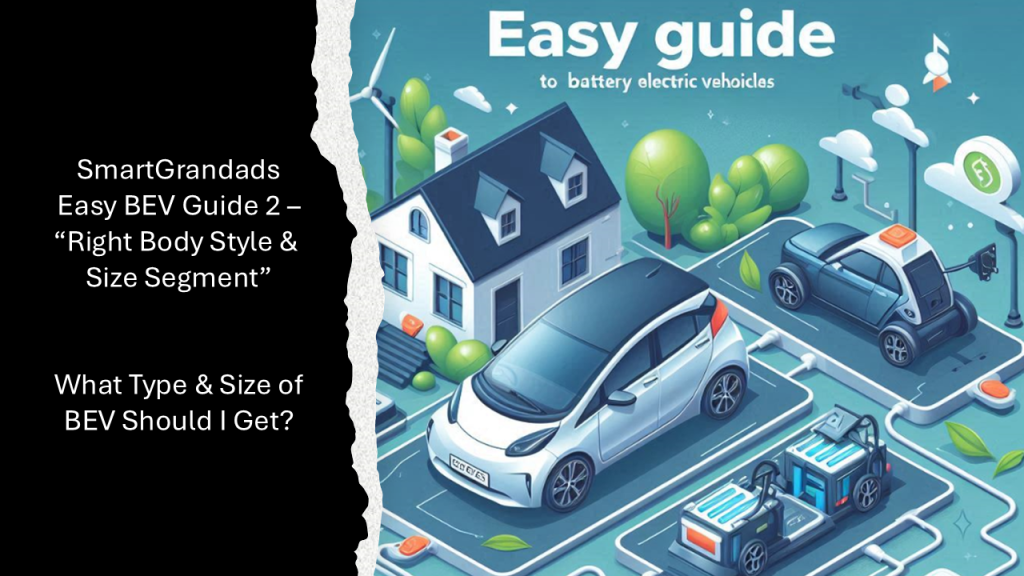
SmartGrandads “EASY BEV” Guides
Through a series of “EASY BEV” Guides, specifically aimed at potential and new Battery Electric Vehicles (BEV) owners, SmartGrandad will help remove any lingering fears.
SmartGrandad will give you some common sense, practical advice, making it easier to be informed about what BEVs are, how to choose which model is best for you.
With 6 plus years of driving different BEVs across Europe/UK and 30 years of delivering successful projects, I have plenty of Real World experience of assessing facts, dealing with challenges and reducing risks.
In “EASY BEV” Guide 2, we will look at answering the question:
“What Body Style and Size of BEV Should I Get”?
Embarking on your electric vehicle (EV) journey is exciting! But with so many options, finding the BEV with the right body style and size can feel overwhelming.
Let’s simplify it by focusing on six key usage factors that will guide your search.

Requirement 1: Daily Commute and Range
- How far do you travel daily? If your commute is short and predictable, a smaller city car or compact hatchback with a moderate range might suffice.
- Do you frequently take longer trips? If you often travel long distances, consider an compact or mid size SUV or sedan with a larger battery and longer range.
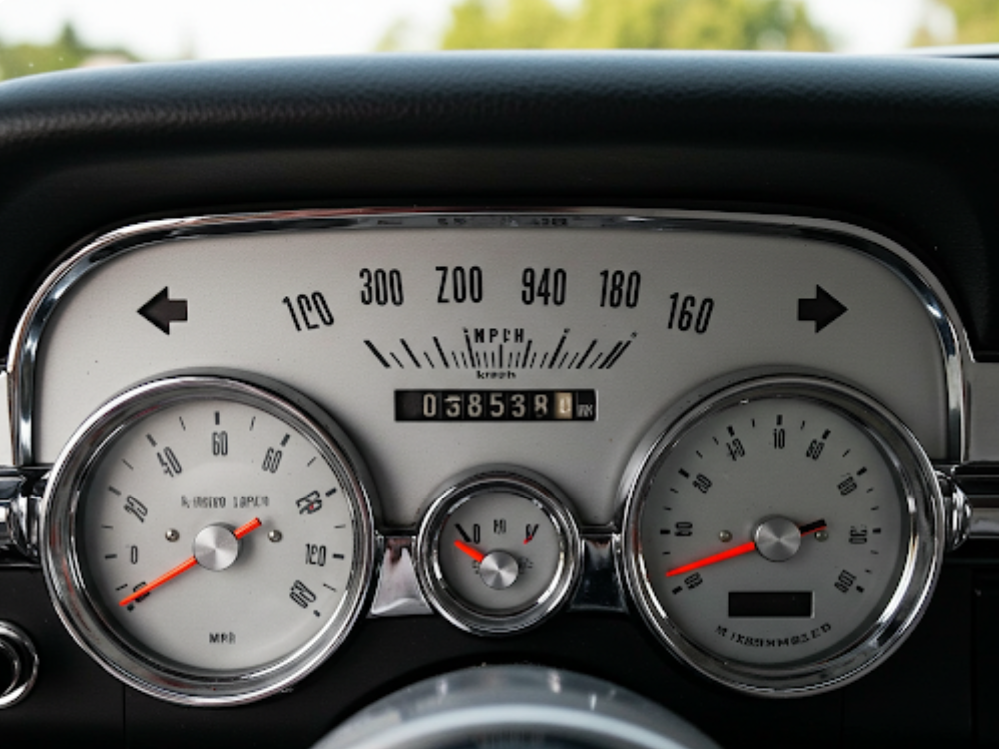
Requirement 2: Passenger and Cargo Space Requirements
- How many passengers do you regularly carry? A compact car might work for solo drivers or couples, while families might need a mid /fill size SUV or minivan.
- What kind of cargo do you transport? If you frequently carry large items, consider an mid /full size SUV or hatchback with ample cargo space. If not compact size salon / hatchback will probably suffice.

Requirement 3: Urban vs. Rural Driving vs Motorway
- City Driving: Smaller, more maneuverable cars are ideal for navigating tight city streets and parking spaces.
- Rural Driving: Mid / Full size SUVs or larger vehicles with higher ground clearance may be necessary for rougher roads or off-road adventures.
- Motorway Driving: compact /Mid size Salons or Coupe shape for more aerodynamic style for economy and speed. Perhaps a bit more luxury to reduce fatigue.

Requirement 4: Your Budget and Costs
Purchase Costs:
- Whether you are purchasing or leasing, price is correlated with size, so micro compact will likely be the cheapest. Larger luxury models are going to cost more regardless of Body Style.
- Government / Manufacturer Incentives, rebates or tax credits that can reduce purchase costs.
- Different Manufacturers have different pricing strategies. German cars tend to be more expensive than other European, US or Asian, with Chinese cars cheapest of all.
Operating Costs:
- Again, generally speaking the bigger the vehicle, the greater the Charging costs.
- However different manufacturers can have significantly different costs for Insurance and Maintenance.
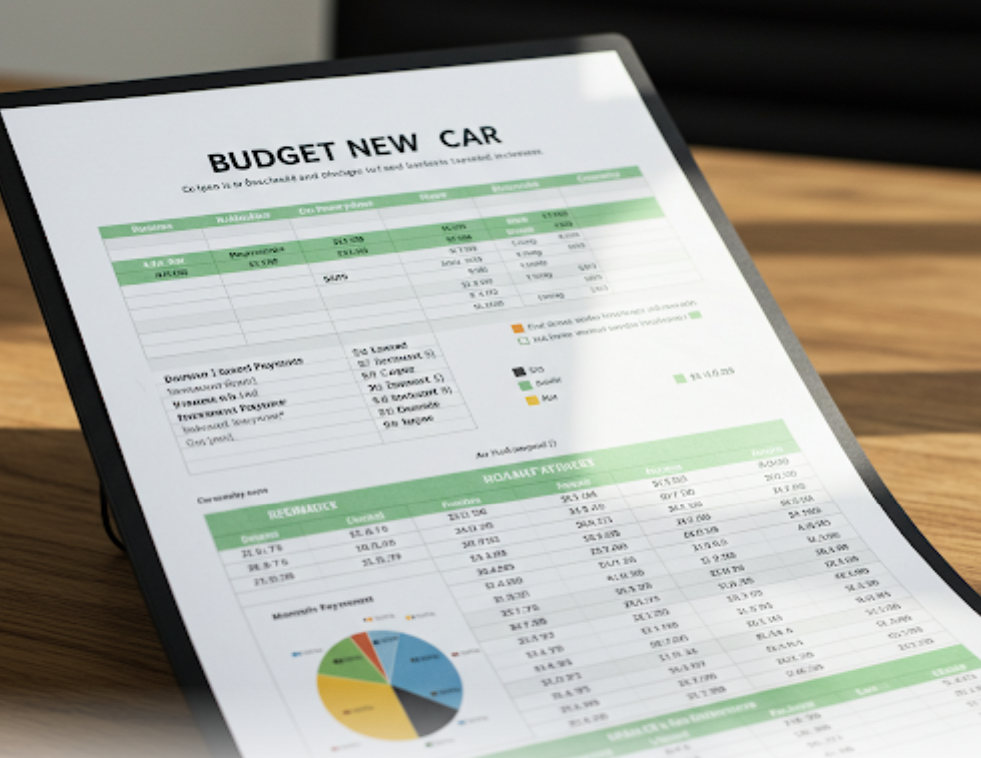
Requirement 5: Parking and Maneuverability
- Parking Space Availability: If parking is limited, a Micro, Sub Compact is easier to maneuver, park and get in or out of. Hatchbacks and SUVs often maximise available space inside the car.
- Turning Radius: Consider the turning radius, especially if you frequently navigate tight spaces. Note:This is not necessarily governed by the style or size of the vehicle.
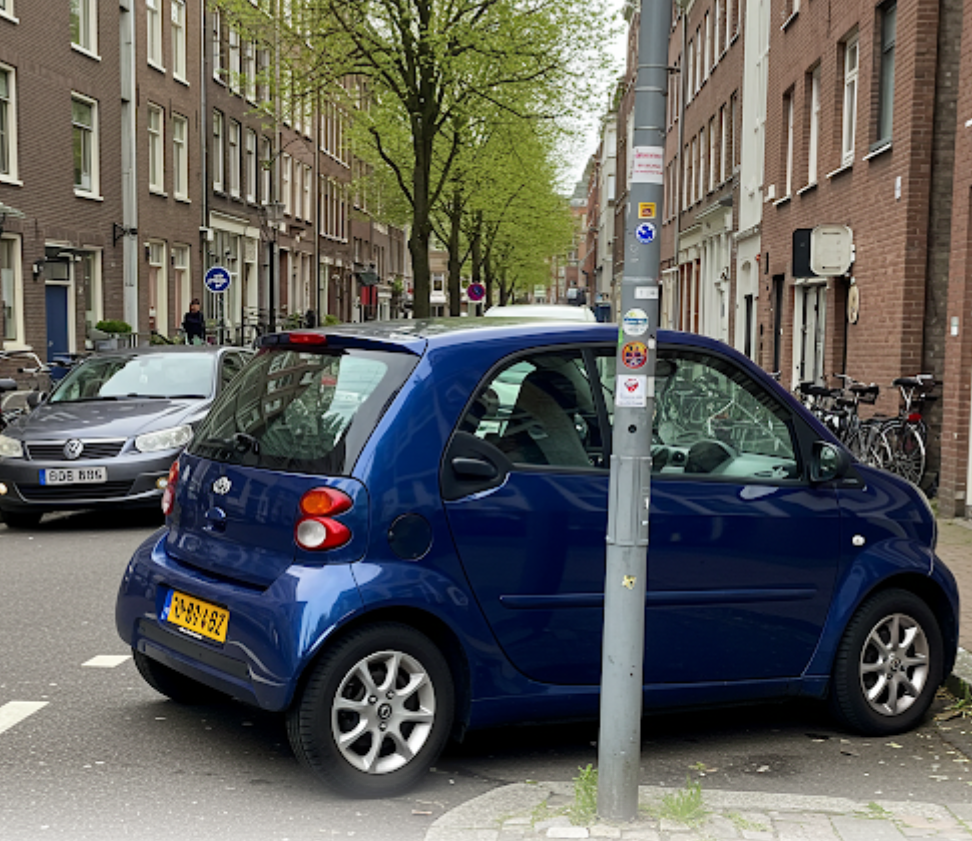
Requirement 6: Lifestyle and Personal Preferences
- Aesthetics and Style: Do you prefer a sleek sedan, a rugged SUV, or a practical hatchback? Do you feel more secure and safer in a larger vehicle?
- Performance and Features: Consider your desired performance (acceleration, handling) and features (infotainment, safety). Coupes or Sports styles are likely to give you the thrill of driving.
- Future Needs: In terms of size, think about how your needs might change in the future (e.g., growing family). More or less sports or other equipment to carry.

Coming to a Conclusion on Body Style & Size Segment
As there are many components in your choice Tip: we found it easier to identify a broad range of models and then score using a spreadsheet which could be best for you.
Step 1: Create a Shortlist of Models
- Checkout the Standard Body Styles and Size Segments Below
- Choose your preferred Body Style
- Using the SmartGrandad Models page, select to see what BEV models match your preferred Manufacturer, Body Style and Size Segment.
- Refine your selection criteria
- Click on the Model info to see more detail, Real Range info and Reviews
Step 2: Rate How Well Each Model Meets Your Requirements
- Rate (1-5) how well each Requirement Factor is met.
- Refine your list.
Step 3: Test Drive of Top 3 Models
- Although the numbers look good you MUST test drive to really understand what the models are really like.
- Also, you will get an understanding of how the garage will support you.
Then its just to decide, and if you cannot decide, then go back and review your requirements and /or the models that you selected.
P.S. See SmartGrandads “Models” selector where you can filter on Body Style, Size Segment or Charging Speed.
So what Body Styles and Sizes can I Choose from?
Body Styles:
- Hatchbacks: Compact, versatile, and efficient, ideal for city driving and small families.
- Salons/ Sedans: Comfortable and stylish, offering a balance of space and efficiency, suitable for commuting and longer trips.
- SUVs: Spacious and versatile, with ample cargo space and higher ground clearance, perfect for families and outdoor adventures.
- Crossovers: A blend of SUV and hatchback features, offering a balance of space and efficiency.
- Minivans: The ultimate family vehicle, with maximum passenger and cargo space.
- Convertible:: The Top Down, performance and handling giving you the thrill of driving, but not the practicality.
Size Segments (Based on European/Global Classifications):
- Microcar/City Car (A-Segment): The smallest category, designed primarily for urban use. They are typically very compact, fuel-efficient, and seat 2-4 people.
- Subcompact/Supermini (B-Segment): Slightly larger than city cars, offering more space and practicality. They are still well-suited for urban environments but can handle longer journeys better.
- Compact/Small Family Car (C-Segment): A popular segment offering a good balance of size, practicality, and affordability. These cars can comfortably seat a small family and are versatile for both city and longer trips.
- Mid-size/Large Family Car (D-Segment): Larger and more spacious than compact cars, often prioritizing comfort and offering more luggage capacity. They are suitable for families and longer distances.
- Executive Car (E-Segment): These are typically more luxurious and powerful vehicles, offering a higher level of comfort, features, and refinement. They are often chosen as company cars or for those prioritizing a premium experience.
- Luxury Car (F-Segment): The top-tier segment, featuring high-end materials, advanced technology, exceptional comfort, and powerful engines. These cars represent the pinnacle of automotive luxury.
- Sports Car (S-Segment): Focuses on performance, handling, and sporty styling. This segment includes coupes, convertibles, and high-performance hatchbacks.
- Multi-Purpose Vehicle (MPV/M-Segment): Designed to maximize passenger and cargo space, often featuring flexible seating configurations. They are ideal for larger families.
- Sport Utility Vehicle (SUV/J-Segment): Characterized by higher ground clearance, a more rugged appearance (though not always off-road capable), and often offering increased cargo space and passenger capacity. Sub-segments exist within SUVs (compact, mid-size, large).
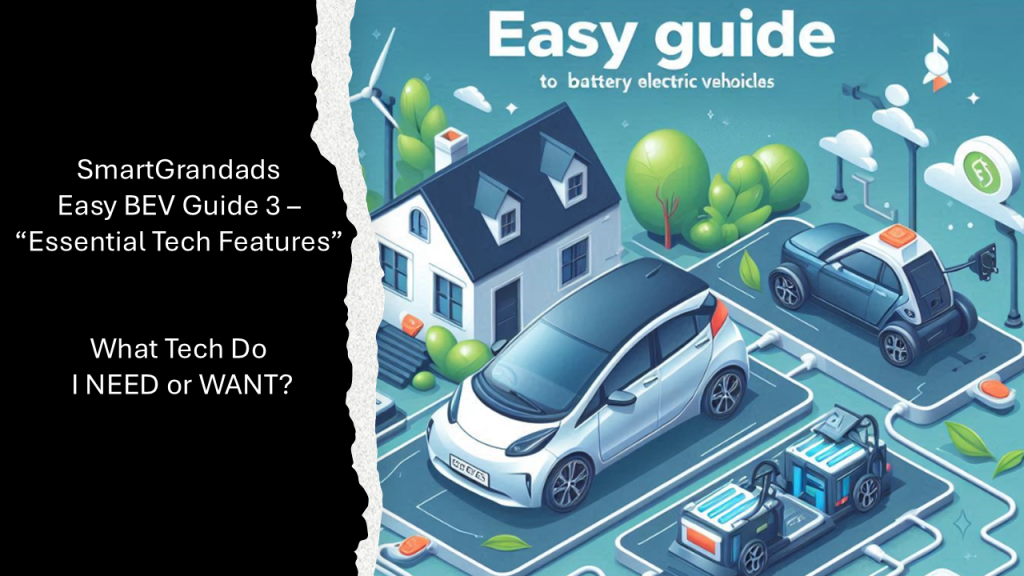
In SmartGrandads “EASY BEV” Guide 3
to be posted soon, I will cover some practical advice and what to take into consideration when on choosing the Essential Tech that you Need or just Want. Future SmartGrandad BEV Guides will be covering factors like Charging, Purchase & Usage costs, Safety & Reliability, ….
So, keep your eyes open for when the next SmartGrandad “Easy BEV” Guide is posted.

